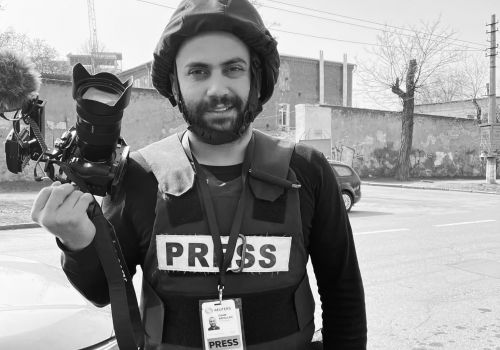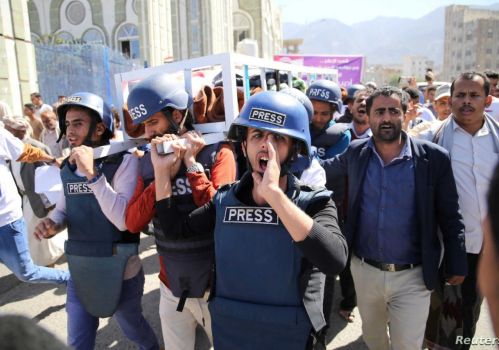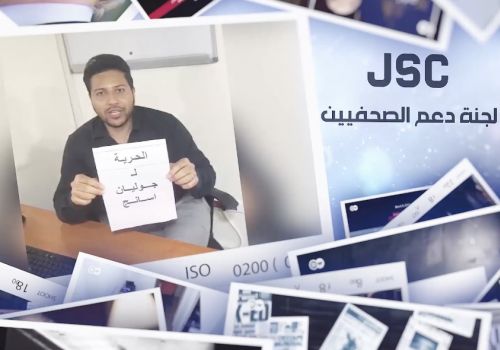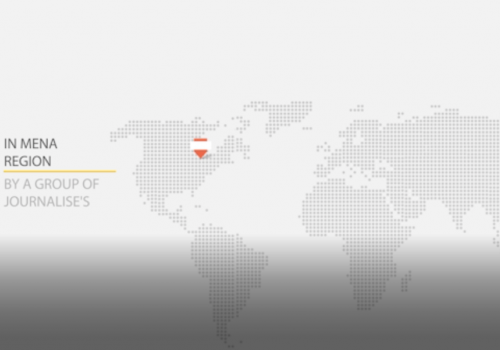Hate speech versus free speech?
2022-04-29 12:12
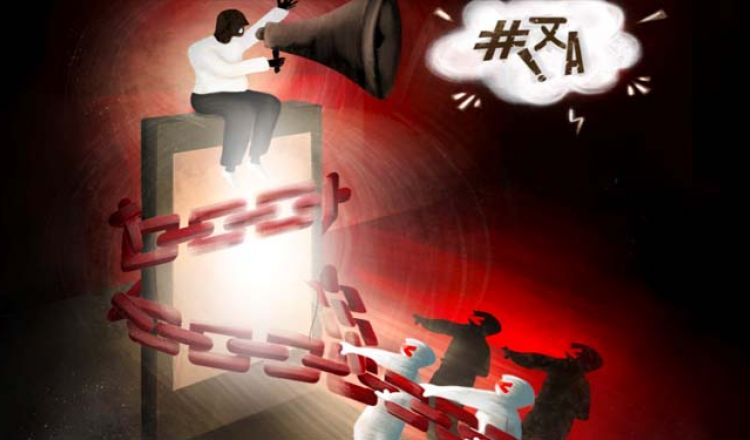
by Anne McMillan-ibanet
The digital world has made it all too easy for repellent and unedited use of language to offend many people. But regulating at the expense of important rights to express even the most challenging ideas is not necessarily the way forward.
Imagine a country where you are guilty until proven innocent. A country where you discover that you have broken the law only after committing an offence hitherto unknown to you. A country where, once an accusing finger has been pointed in your direction, you are suspended from your job before the ‘facts’ have been determined, colleagues avoid you and people who were once considered friends desert you—all because of something, perhaps just a few words, you said or wrote.
Maybe this sounds like Mao’s China or Stalin’s Russia? Certainly, the control of language has long been a key item in the toolbox of autocratic regimes (see box: Banning whole languages). But outlawing entire languages, as those regimes did, is not the only form of control.
Orwellian Newspeak
In George Orwell’s seminal novel 1984, the people of the fictitious superstate ‘Oceania’ spoke the same language. But it was essential that all citizens speak it in the same way using the approved terms of the state-controlled ‘Newspeak’. As Orwell explained in the appendix to 1984, the intellectual purpose of Newspeak was to make approved thoughts the only expressible thoughts.
Does this have a familiar ring? If so, perhaps it’s because recent years have seen growing regulation of language in liberal democracies and increasing debate surrounding the development or extension of so-called ‘hate speech’ laws. What is driving this development? Is it simply the explosion of social media giving individuals immediate access to a means of widespread dissemination coupled with the difficulty, or complete absence of, regulation? This certainly plays an important part.
Susan Kemp is a member of the IBA’s Human Rights Institute Council. ‘I suspect the social media phenomenon is a principal driver of increased regulation of speech’, she says, ‘(not only hate speech but defamatory speech and incitement to violence generally) in the sense of the sheer quantity and unfiltered initial dissemination of comments online. Obviously traditional media or radio, TV and the press filtered language through editors and, if necessary, lawyers’.
Some may think our social and political discourse is becoming angrier, ruder and more prejudiced, while others argue that people are too sensitive or need to toughen up. One thing though remains undisputed – there is considerable disagreement, both within society and the law, on where the line should be drawn when it comes to limiting freedom of expression in order to ‘deal’ with hate speech.
I suspect the social media phenomenon is a principal driver of increased regulation of speech […] traditional media […] filtered language through editors and, if necessary, lawyers
Susan Kemp
Member, IBA Human Rights Institute Council
We have long had laws which curtail freedom of speech in limited spheres, for example defamation, obscenity or the incitement of discrimination or violence. Though the concept is old, the expression ‘hate speech’ is relatively new. It originated in the US in the late 1980s when a group of legal scholars, observing a problem of racist (and sexist) abuse at colleges, tried to address what they saw as a legal lacuna in dealing with ‘racist hate messaging’.
In a 1990 article in the Duke Law Journal entitled ‘The Chilly Climate on College Campuses: An Expansion of the “Hate Speech” Debate’, Bartlett and O’Barr argued that ‘universities must be pressed to throw their moral weight around […] university administrators should publicly identify and condemn specific, objectionable behaviors—those that are subtle and unintentional as well as blatant and egregious, and those that cannot be legally regulated as well as those that can’.
This casual widening of the concept of hate speech, and delegation of its oversight to institutions, foreshadows some present-day cases at universities and elsewhere. The expression ‘hate speech’ is now widely used by groups ranging from legislators and courts to the media – not to forget the general public. Its dual legal and non-legal usages seem to emphasise the apparent impossibility of reaching a commonly understood definition.
Banning whole languages
Whole languages have been banned by autocratic regimes to enforce uniformity and compliance. In most cases this process began with oppression of language in certain contexts or the prohibition of certain words or expressions.
Both Czarist Russia and the Soviet Union forcibly suppressed the languages of minority peoples in favour of the Russian language. Languages like Finnish, Lithuanian and Ukrainian were banned or discouraged and eventually the Cyrillic script was imposed to obliterate the Latin alphabet in order to ensure conformity and subjugation.
China has banned the languages of the Uighur and Tibetan minorities, and Hong Kong is coming under pressure to use the government-favoured language of Mandarin, as opposed to the southern Chinese dialect of Cantonese.
The suppression of whole languages overlaps with present day gagging in the common language: in 2018 the popular Chinese microblogging site Weibo blocked searches of the words ‘I oppose’, ‘incapable ruler’, ‘I disagree’ and, in a quintessentially Orwellian gesture, ‘Animal Farm’.
The record of democracies is better, though not perfect. In a 2018 report, the non-governmental organisation ARTICLE 19 examined the hate speech laws in Austria, Germany, Hungary, Italy, Poland and the United Kingdom. It found: ‘widespread deficiencies in the respective national frameworks on “hate speech” in terms of their compatibility with applicable international freedom of expression standards, as well as inconsistencies in the application of existing legislation.’
A further effect of passing vague and subjective hate speech laws in democracies is that they may help to justify distorted ‘copycat’ versions in autocratic regimes. Koenig highlights this risk: ‘The danger of broadening the categories of speech that are criminalised is that both democracies and autocracies will use that broadening to crack down on speech that criticises government action, or to foster intolerance against disfavoured perspectives and populations, in ways that are increasingly difficult to challenge using the law.’
But as Kemp points out, although abuse of laws by autocratic regimes is nothing new, it is not the sole preserve of ‘oppressive’ political systems: ‘States seeking to muzzle domestic opposition are likely to do so regardless of the West taking a lead on such matters. Many autocracies may regard it as a badge of honour that they do not follow the lead of the West on this or any other domestic policy issue. I wouldn't necessarily demarcate Western democracies and autocracies completely either — Western democracies are not immune from tendencies to overreach when it comes to executive power.’
It is difficult to avoid the conclusion that unless cool heads and consistent laws prevail on the issue of hate speech, the line between democracies and autocracies risks becoming blurred.
Hate speech
The expression ‘hate speech’ encompasses a daunting range of possible utterances and yet has no agreed definition in international law. International law protects freedom of expression, in particular under Article 19 of the International Covenant on Civil and Political Rights (ICCPR), but the right is subject to limitations. In practice this means that where measures less onerous than restricting freedom of expression exist, they should be used. Furthermore, any statement must be examined to determine if there is an overriding public interest in its expression.
Absent the intentional use of racist or discriminatory speech to incite ‘discrimination, hostility or violence’ (as proscribed by Article 20 of the ICCPR), we enter even murkier territory. Statements that could be described in common parlance as offensive, insulting or inflammatory may be determined illegal in various national or international courts, but even so there is no clear pattern emerging.
As early as 1976, the European Court of Human Rights tried to sharpen the legal line in the case of Handyside v the United Kingdom, holding that ‘information’ or ‘ideas’ that ‘offend, shock or disturb’, as well as those favourably received or inoffensive, are protected under the right to freedom of expression. But difficulties arose when it came to further deciding what this meant in individual cases. As an article by legal scholars Mchangama and Alkiviadou in the Human Rights Law Review of December 2021 concluded: ‘the Court has since developed a substantial body of inconsistent case-law allowing restrictions on “hate speech” that severely questions the degree to which offensive, shocking and disturbing speech is truly protected by the ECHR.’
Freedom of expression at all costs?
When it comes to offensive speech at the national level, the world’s largest democracies take fundamentally different approaches. A Council of Europe decision requires EU Member States to criminalise certain forms of hate speech. A 2018 report by non-governmental organisation ARTICLE 19, which defends and promotes freedom of expression and freedom of information, concluded this was ‘sometimes in circumstances which are broader and in the penalties more severe’ than those envisaged under the ICCPR. On the other hand, in the US, the sanctity of freedom of expression under the First Amendment to the Constitution continues to prevail.
Alexa Koenig is Co-Chair of the IBA’s Human Rights Law Committee and Executive Director of the Human Rights Center at the University of California’s Berkeley School of Law. ‘The United States’ approach to speech under the First Amendment emphasises the power of public debate to help clarify “truth” and to counter problematic speech, with the goal of creating an informed public and a robust marketplace of ideas’, says Koenig.
The United States’ approach to speech under the First Amendment emphasises the power of public debate to help clarify "truth" and to counter problematic speech
Alexa Koenig
Co-Chair, IBA Human Rights Law Committee
The US stance has a long history. In a 1927 case, Whitney v California, US Supreme Court Justice Louis Brandeis, in delivering a rousing defence of freedom of speech, advised that the remedy for messages that people dislike or dispute is ‘more speech, not enforced silence’.
Although the US does not have specific hate speech laws, Randy Bullard, Co-Chair of the IBA’s Lesbian, Gay, Bisexual, Transgender and Intersex Law Committee, notes that this does not necessarily mean that protections do not exist for minority groups like the LGBTQI community. ‘A broad-ranging freedom of speech (without hate speech laws) can co-exist with a multitude of other important legal protections for the LGBTQI community. Laws regarding hate crimes, protections and recognitions for gay relationships and families, anti-discrimination in housing and employment and other equal protection rights for the LGBTQI community have advanced significantly over the last ten years in the US.’
In the United Kingdom the situation is not as clear-cut. A case in point is the Hate Crime and Public Order (Scotland) Act 2021, which demonstrates the difficulty in reaching agreement on what should constitute legally prohibited speech. An early draft of the law, which posited that a hate speech offence could be committed without intent, was met with outcry from lawyers, police, media, academics and NGOs alike and as a result was amended.
Under the Scottish law, an offence is committed if there is actual intent or if ‘a reasonable person would consider the behaviour or the communication of the material to be likely to result in hatred being stirred up against a particular group’. However, questions remain as to how this ‘reasonable person’ test would be applied in practice. For example, would such a fictitious person need to have the characteristics of a member of the protected group? And the use of the expression ‘stir up’ rather than ‘incite’ hatred has also caused controversy. Incitement is a well-known legal concept, whereas ‘stir up’ is vaguer, suggesting the possibility of accidental, rather than intentional, harm.
As Koenig notes: ‘Such a broad law does raise the risk of overreach against disfavoured populations, for political purposes, etc. What does it mean to stir up hatred? Could this result in a silencing of needed perspectives? There is a lot of room for subjectivity with such an approach, and history shows that some of our most politically vulnerable are likely to bear the burden of that subjectivity long-term, even if a law is created with protective intent.’
A man holds up a placard in support of freedom of expression and social media usage during an anti-hate speech protest in Lagos, Nigeria on 28 November 2019. Shutterstock.com/Oluwafemi Dawodu
Meanwhile, women’s groups are complaining that the female sex has been excluded as a protected group, although ‘sexual orientation’, ‘transgender identity’ and ‘variations in sex characteristics’ are all included. This led to a Working Group being established, chaired by Director of the IBA’s Human Rights Institute, Baroness Helena Kennedy QC, to determine whether the characteristic of sex should be added to the current law or if a separate crime of misogyny should be established.
A broad-ranging freedom of speech (without hate speech laws) can co-exist with a multitude of other important legal protections
Randy Bullard
Co-Chair, IBA Lesbian, Gay, Bisexual, Transgender and Intersex Law Committee
Even if agreement is reached between proponents and opponents of the law, how easy is implementation likely to be? The Scottish example illustrates the problem that, when laws appear to overreach, especially when they go beyond international law standards, they may ultimately risk defeating their purpose. Far from creating cohesion and harmony, ill-drafted laws risk dividing societies further.
Guilty by inference
But even before laws come into play, there can be difficulties. There are numerous contemporary instances, particularly in academia, where allegations of racism or homophobia have had dramatic consequences for those accused before any findings as to guilt have been made by internal investigations or in a court of law.
A number of such cases were examined in a 2021 article published in The Atlantic magazine. In ‘The New Puritans’, Anne Applebaum (author of a book about the Sovietisation of Central Europe in the 1940s) offers an historical comparison with today’s situation, noting that for people suspected of offending against perceived social norms in Stalin’s Russia, social exclusion and isolation were more chilling and permanent punishments than clear-cut and predictable legal sanctions. Applebaum may be delivering a warning for our times when she writes that ‘much of the political conformism of the early Communist period was the result not of violence or direct state coercion, but rather of intense peer pressure’.
Freedom of speech advocates fear this exact outcome and are concerned that uncertainty regarding what will be punished, and how, will lead to self-censorship and stifle open debate. Rather than the laws themselves, this atmosphere may constitute a more pernicious attack on freedom of expression, regardless of the political environment. It can lead to publishers, employers and others who may be held responsible (either in law or in the arena of public opinion) to err on the side of caution by bowdlerising or refusing to publish potentially controversial ideas.
This points to a fundamental problem in expanding categories of hate speech beyond those that clearly intend to incite violence or discrimination. How is it possible to know where the line will be drawn? And, if this is not achievable, how can the principle of legal certainty be upheld? As Koenig says: ‘There's a reason that definitions are so central to legal practice; we can't effectively criminalise or otherwise prohibit something that can't be defined.’
Plan of action
The ‘Rabat Plan of Action’, developed by the United Nations in 2012, lays down guidelines for determining what is – and what is not – hate speech under international law. The plan states, for example, that prohibitions should be aimed at ‘the advocacy of discriminatory hatred that constitutes incitement to hostility, discrimination, or violence, rather than the advocacy of hatred without regard to its tendency to incite action’.
It also establishes several tests to be applied to possible hate speech, such as the identity and influence of the speaker; frequency and volume of statements; and the likelihood of harm occurring as a direct and imminent result of the speech. Unfortunately, the guidelines have generally not been used by governments when developing their national laws.
Koenig draws attention to the need to understand the effect of online abuse and insults before determining whether more legal regulation is needed. ‘While the laws that we have continue to be powerful tools for balancing free speech with protection against violence’, she says, ‘we desperately need more empirical research to help us better understand the positive and negative effects that digital means of transmission have in fostering hate and increasing the likelihood of violence against targeted individuals and communities’.
Kemp also stresses the importance of other approaches, such as ‘raising awareness of the human rights framework through public education, police training and strong oversight mechanisms. Education about the importance and legal framework of freedom of speech and about the damage that incitement of hate can do would both go a long way toward that goal’.
While we need to use the law to protect individuals and groups against language which is likely to incite violence, the law has not always been judged the right vehicle to address all insulting words or offensive phrases, no matter how repulsive we may find them.
In a recent instance, Canadian comedian Mike Ward was convicted for ridiculing a disabled child singer, including mocking physical aspects of his disability. The conviction was overturned by the Canadian Supreme Court in 2021 holding that the singer was targeted not because of his disability but because of his fame, and that while ‘making fun of a person’s physical characteristics may be repugnant […] expression of this kind does not, simply by being repugnant, incite others to detest or vilify the humanity of the person targeted’. It is worth noting though that the Court was split 5-4 in its decision, underlining the difficulty in reaching unanimity on such issues.
Perhaps then, the question that we need to ask is why, beyond fundamental international law definitions, agreement on what constitutes hate speech is so elusive? Are national governments guilty of pandering to perceived societal shifts for fear of losing votes? Are they trying to find a way to ‘fast-track’ or engineer widespread social change by means of the law? It’s not always easy to determine, but, if governments do not tread carefully, they risk doing more harm than good for their societies in the long term.
Anne McMillan is a freelance journalist and author.


